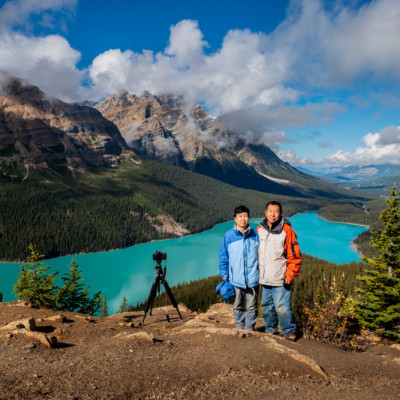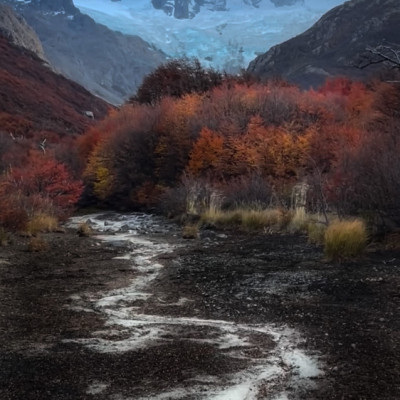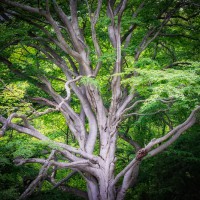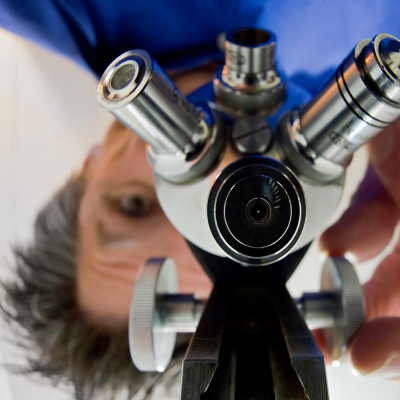SEARCH






|
|
|
|


by Editor Miro Susta
Edited and published by Yvette Depaepe, the3rd of May 2023
The invention of steam railway at the beginning of the 19th century is attributable primarily to the technical development of stationary steam engine and the steam boiler, which were ground-breaking at that time.
'Little-Jumbo' by Harri Aho
Gradually, the weight and dimensions of these two main components, the steam engine and the boiler, were reduced to such an extent that it was conceivable to place them on a mobile chassis for transport on the routes that were convenient at the time.
'Ransomes' by Rob Marshall
The transport route was, as it is today, a rail track consisting of iron rails on cross-ties made of wood and later of metal and/or concrete.
'Parallel lines' by Allan Wallberg
The Englishman Richard Trevithick constructed the steam locomotive on the basis of a wager between two ironworks owners. Content of the wager: “the railway should replace the draught horses and transport people and considerably more goods than in the past”.
'Winter in Bukovina' by Panfil Pirvulescu
Exactly 219 years ago, on 13 February 1804, the first steam locomotive in the history officially made its maiden voyage over a 15-kilometre route at a top speed of 8km/hour. The wager had been won.
'TrainStation' by Marcel Egger
It was a revolution in transport and a milestone of so-called industrialisation.
In this way, the first steam railway train system was based on two important inventions that had been made before: On the one hand, the steam engine locomotive, and on the other, the running of wagons on rails.
'Old train Hutulca' by Sveduneac Dorin Lucian
Even though James Watt built the first functioning steam engine in 1770, he is not its actual inventor. The principle of using steam to drive machines was already discovered in antiquity.
'time bandits mechanical room' by Astrid Herzsprung
Heron of Alexandria, for example, developed a device around 120 AD that could be used to impressively open large temple doors.
'Rail Worker' by Sudipta Chakraborty
The other very important element involved the idea of rails, which had its origins in mining, where coal, ore and rubble were transported on rail wagons. The earliest rail systems, then still made of wood, are known from the Middle Ages.
'The follower' by Catalin Alexandru
Almost 198 years ago, on 27 September 1825, the world's first public railway train was launched with the operation of George Stephenson's "Locomotion No. 1" on a 39 km route from Stockton to Darlington in England. It made the journey at a speed of 16 to 17 km/hour.
'End of the Line' by Carl Bostek
The first steam locomotives were relatively simple, without a driver's cab. It was not until the 1860s that enclosed cabs for the locomotive crew began to appear on steam locomotives.
Untitled by Herion Jean-Claude
A significant modernisation was the application of injector water feeders, which replaced the hitherto usual impractical piston feed pumps.
Untitled by Herion Jean-Claude
The dynamically expanding railway network in the last quarter of the 19th century caused a steep increase in coal consumption, for which the railways had to compete with other industrial sectors. This motivated efforts to improve the economics of locomotive operation.
'Blow That Whistle' by Chuck Gordon
In the early 1890s, the concentrated expansion of steam in the locomotive steam engine was seen as a suitable way to achieve the intended objective.
'Full Steam Ahead' by Miro Susta
But it was not until introduction of superheated steam, the use of mineral oils instead of vegetable greases, and finally the adoption of sheet steel and the replacement of flat- by piston- distributors in locomotive construction at the turn of the 19th and 20th century.
'machinist' by Christoph Hessel
'the big love' by Holger Droste
At the beginning of the 20th century, the steam locomotive had thus reached the peak of its technical development, and further increases in performance were achieved only in terms of quantity.
'Last from Mohicans' by Dimitry Laudin
At the time of its greatest development, around the middle of the 20th century, almost a quarter of a million steam locomotives were in use worldwide, managing around 90 % of rail transportation.
'Train Race in BW' by Chuck Gordon
The culmination of steam locomotive design is represented by the world's fastest locomotive, the Mallard locomotive built in England in 1938, which reached a speed of 202 km/h on 3 July 1938, setting a steam traction record that remains unbroken to this day.
'Gold digger train' by Hubert Bichler
Another record holder was the longest (40.4 m long) steam locomotive, weighing 548.2 tonnes with an engine power output of 4'700 kW (6'300 HP) named "Big Boy" built in USA in 1941. By the end of the 20th century, however, steam locomotives had practically disappeared from all railway lines. Steam locomotives in commercial, non-tourist use can now only be found in three countries, and almost only in subordinate services.
'Old Steamer in Frozen Landscape' by MAir
The tension is increasing as to which country and which place will bear the honorary title of "the last".
After Australia, North America and South America, Africa has now also dropped out of the race.
In Europe, steam locomotive service has survived in Bosnia at three coal mines in the Tuzla area.
In Indonesia, the Purwodadi sugar factory near Madiun was the last mill to still use two steam locomotives daily in front of transfer trains in the 2018 harvest season.
In China, the Sandaoling coal mine in the western province of Xinjiang has four to seven steam locomotives hauling heavy coal trains and manoeuvring in the mines every day.
'Late night train' by Bingo Z
Today's modern railways may get you to your desired destination quickly and reliably, but they have certainly lost their atmosphere.
The traditional steam locomotives moved more slowly between stations, but they allowed travellers to take a leisurely ride through sometimes scenic routes where one could, for example, relax a little after returning from work.
Untitled by Hans Repelnig
Nowadays, these railways have been preserved as valuable historical monuments, contributing to some of the most beautiful moments of a travel experience.
In the following is a selection of some of the most beautiful historic steam railways in the world:
Darjeeling Himalayan Railway, India
'Joy Ride-Darjeeling' by Sudipta Chakraborty
Isle of Man Steam Railway, United Kingdom
Jacobite Steam Train, United Kingdom
'Glenfinnan Viaduct' by Jure Kravanja
Cumbres and Toltec Scenic Railway, USA
Black Hron Railway, Slovakia
Šargan Railway, Serbia
Sauschwaenzlebahn, Germany
'At the train stop' by Miro Susta
Puffing Billy Railway, Australia
Rasende Roland on the island of Rügen, Germany
Mocanita Hutulca steam railway, Rumania-Moldovia
'Mocanica Hutulca' by Sveduneac Dorin Lucian
Museumseisenbahn S·T·A·R Groningen, Niederlanden
Museumsbahn Maribo-Bandholm auf de Insel Lolland in Maribo, Denmark
Hamar Railway Museum steam line, Norway
'Urskog at Hamar-Norway' by Håvard Flaatten
Rosentalbahn in der Karawanken, Österreich
Historische Eisenbahn Kalamata, Griechenland
White Mountains Central Railroad, USA
Kamloops Heritage Railway in Rocky Mountains, Canada
El Tren del Fin del Mundo, Argentina
La Trochita, El Viejo Expreso in Patagonien, Argentina
Tren Turístico „La Sabana“, Kolumbien
Finally, it may be noted that the image of the steam locomotive is present in the common consciousness; even small children, when asked to draw a train, will almost always include a steam locomotive.
'breaking the silence' by Vlad Dumitrescu
Even a road railway crossing with a steam locomotive symbol is often brought to our attention by a road sign.
Riding nostalgic trains, taking photos and even preserving the heritage of our grandfathers has also a therapeutic effect. Steam locomotives have played an undeniably positive role in the history of civilisation.
'Central Station Hustle' by Tom Baetsen-xlix.nl
However, there is a dark side to steam trains, which were also used in military transports.
The railway has become a part of our everyday life, it is a very important technical feature without which we can hardly envisage our life, but it also has its genius of its own. In the minds of many people, however, the symbol of the railways is the steam locomotive.
'Museum train' by Ales Krivec
We are grateful to those remarkable people who look after the steam locomotives, who have resurrected them from clinical death, and thanks to them the world's steam railways will not completely die out.
The Magical World of Railways
www.mrsphoto.net
[email protected]
 | Write |
 | Catalin Alexandru Thank you for the choice you made in choosing my photo and an excellent article Miro! |
 | Miro Susta CREW You are most welcome Catalin and many thanks for your wonderful contribution |
 | Wanghan Li PRO Excellent article and the great selection! Appreciate it! |
 | Miro Susta CREW Many thanks dear Wanghan for your praise |
 | Ludmila Shumilova PRO Great article and photo gallery! Congratulations! |
 | Miro Susta CREW Thank you very much derar Ludmila. |
 | Bing Li PRO Very intrigued collection and history. Fantastic images. |
 | Miro Susta CREW Many thanks Bing Li for your nice appreciation. |
 | Cristiano Giani PRO ...really interesting history, and superb images. Many congrats.... |
 | Miro Susta CREW Thank you very much Cristiano |
 | Roland Weber PRO A really cool article and inspiring and a lot of well-chosen photos.
Thanks for that. |
 | Miro Susta CREW I'm happy to that you like it Roland, thank you. |
 | Kimberly CREW What a lovely article Miro, I love the nostalgia these images and this story evokes. Longing for simpler times. Kim |
 | Miro Susta CREW Many thanks for your lovely comment dear Kimberly. |
 | Barbora Gábrišová Stunning photos and very high quality of article. Interesting theme. |
 | Miro Susta CREW Thank you very much Barbora for your nice praise. Dakujem krasne. |
 | Luba Chapman PRO Great article and wonderful collection of photos! Thank you, authors! |
 | Miro Susta CREW Many thanks dear Luba for your appreciation of our work. |
 | Tony Galvin PRO wonderful feature. Thanks so much |
 | Miro Susta CREW Thank you very much Tony. |
 | Steven T CREW Miro and Yvette,
Really enjoyed the excellent photographs. Thank you! |
 | Yvette Depaepe CREW Our pleasure, Steven ;-) |
 | Sergio Barboni PRO Bellissime immagini che ci donano un affascinante viaggio nel tempo! |
 | Miro Susta CREW Grazie mille per le tue belle parole di apprezzamento, caro Sergio. |
 | Eduardo Blanco García PRO Una mirada mágica al pasado. Como hijo de ferroviario me encanta. |
 | Miro Susta CREW Nos alegra ver que te gusta querido Eduardo. |